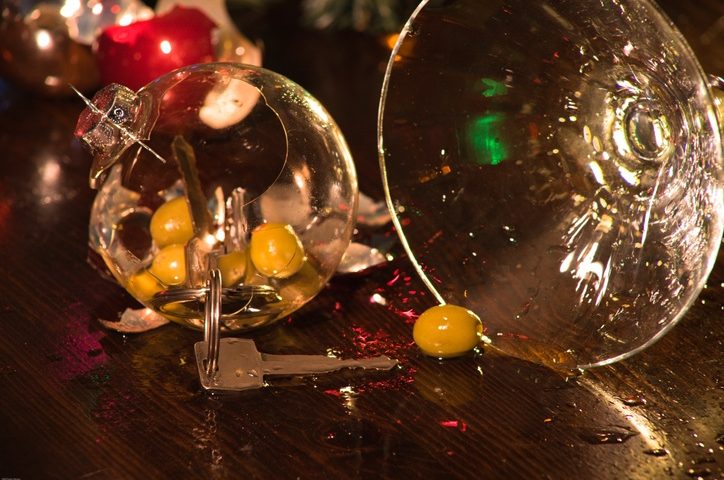
How Many Drinks Before I’m Drunk?
Call Houston DWI Lawyer Clyde W. Burleson at ☎ 713-628-1503 For a Free Consultation
When you drink alcohol, it is absorbed by your body. The more drinks you consume, the higher the concentration of alcohol is in your system. The amount of alcohol detected in your blood is known as blood alcohol content, or BAC, and it shows the number of grams of alcohol in your blood.
How is Blood Alcohol Content (BAC) Measured?
BAC is measured with tests such as blood analysis, urinalysis, or breath analysis. Blood analysis is usually the most accurate way of measuring BAC.
In Texas, the legal limit of BAC is 0.08, meaning if you are given a test to determine your BAC, it must be under 0.08 to not be considered as driving while intoxicated. However, you can still get a DWI under.08 BAC.
How Many Drinks Can I Have Before I’m Legally Drunk?
So how many drinks can you have to keep your BAC under 0.08? This is not a simple question to answer since each person’s body absorbs alcohol at different rates. There are many factors that affect BAC. These include:
- Number of drinks
- Amount of time in which drinks are consumed
- Body weight
- Water composition
- Enzyme production and levels
- Sex assigned at birth and corresponding hormone levels
- Medications
- Food
The following chart can be used as a general guideline to determining BAC levels. This chart assumes each drink is either 1.5 ounces of liquor (40% alcohol by volume), 5 ounces of wine (12% alcohol by volume), or 12 ounces of beer (5% alcohol by volume); the chart excludes cocktails and mixed drinks due to the inconsistency of how much alcohol these drinks may contain.
What is One Alcoholic Drink?
- One 12 oz. regular beer (4.5-6% alcohol)
- One 12oz. White Claw (5% alcohol)
- One 7 oz. malt liquor (7% alcohol)
- One 5 oz. glass of wine (12% alcohol)
- One 1.5 oz. shot of hard liquor (40% alcohol)
- One-third jigger (.5 oz.) of Everclear (95% alcohol)
| Weight (Lbs) |
Number of Drinks Consumed |
||||||||
| 1 | 2 | 3 | 4 | 5 | 6 | 7 | 8 | 9 | |
| 100 | 0.032 | 0.065 | 0.097 | 0.129 | 0.162 | 0.194 | 0.226 | 0.258 | 0.291 |
| 120 | 0.027 | 0.054 | 0.081 | 0.108 | 0.135 | 0.161 | 0.188 | 0.215 | 0.242 |
| 140 | 0.023 | 0.046 | 0.069 | 0.092 | 0.115 | 0.138 | 0.161 | 0.184 | 0.207 |
| 160 | 0.020 | 0.040 | 0.060 | 0.080 | 0.101 | 0.121 | 0.141 | 0.161 | 0.181 |
| 180 | 0.018 | 0.036 | 0.054 | 0.072 | 0.090 | 0.108 | 0.126 | 0.144 | 0.162 |
| 200 | 0.016 | 0.032 | 0.048 | 0.064 | 0.080 | 0.097 | 0.113 | 0.129 | 0.145 |
| 220 | 0.015 | 0.029 | 0.044 | 0.058 | 0.073 | 0.088 | 0.102 | 0.117 | 0.131 |
| 240 | 0.014 | 0.027 | 0.040 | 0.053 | 0.067 | 0.081 | 0.095 | 0.108 | 0.121 |
Effects of Alcohol at Various Blood Alcohol Content Levels
| BAC | Physical and Mental Effects |
|---|---|
| .01 – .03 | No apparent effects. Slight mood elevation. In California, you will test as legally impaired at .01% BAC if you are under 21. It is illegal to drive or bike at this level. |
| .04 – .06 | Feeling of relaxation. Sensation of warmth. Minor impairment of reasoning and memory. |
| .07 – .09 | Mild impairment of balance, speech, vision and control. In California, you will test as legally impaired at .08% BAC if you are over 21. It is illegal to drive or bike at this level. |
| .10 – .12 | Significant impairment of motor coordination and loss of judgment. Speech may be slurred. |
| .13 – .15 | Gross impairment of motor control. Blurred vision and major loss of balance. Onset of dysphoria (anxiety, restlessness). |
| .16 – .20 | Dysphoria predominates. Nausea may appear. Drinker has the appearance of “sloppy drunk.” |
| .25 – .30 | Severe intoxication. Needs assistance walking. Mental confusion. Dysphoria with nausea and some vomiting. |
| .35 – .40 | Loss of consciousness. Brink of coma. |
| .40 and up | Onset of coma. Likelihood of death due to resp |
Arrested for DWI? Call Clyde Burleson
If you have been arrested for DWI, call DWI specialist Clyde W. Burleson, P.C. at 713-628-1503 for a free consultation!




